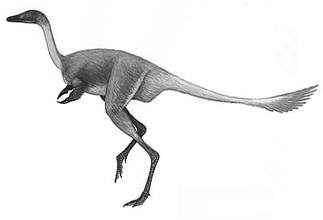
Mononykus Dinosaur is a genus of small, bird-like dinosaur that lived during the Late Cretaceous period, around 70 million years ago. Its name, derived from Greek, means "one claw," referring to its most distinctive feature—a single large claw on each forelimb. These claws were exceptionally large and curved, suggesting a specialized adaptation for a specific function.
Mononykus had a compact and slender body, measuring approximately 1.5 meters (5 feet) in length. It possessed long hind limbs, which were well-adapted for rapid running and agility. Its forelimbs were highly modified, with reduced fingers and a single large claw projecting from the hand. This unique feature sets it apart from most other theropod dinosaurs. The exact function of Mononykus' large claws remains somewhat debated. One prevailing theory suggests that these claws were used for digging and burrowing.
Mononykus Facts :
| Name: | Mononykus Dinosaurs |
| Size: | 1.5 meters |
| Main Facts: | Mononykus is a genus of small, bird-like dinosaur that lived during the Late Cretaceous period, around 70 million years ago. |
robust structure of the forelimbs, along with the powerful muscles attached to the claw, would have allowed Mononykus to excavate burrows or search for underground prey, such as insects, small mammals, or even plant roots. The slender snout and teeth of Mononykus further support the idea of an insectivorous or omnivorous diet.
Mononykus had long, slender legs that indicate it was a fast runner. Its limb proportions were similar to modern ground-dwelling birds like ostriches. This suggests that Mononykus was adapted for swift locomotion on the ground, enabling it to chase after prey or evade predators. The fossil record of Mononykus is limited, with only a few partial skeletons discovered in Mongolia. Nonetheless, these findings have provided valuable insights into the diversity of small theropod dinosaurs and their adaptations. Mononykus represents a fascinating example of convergent evolution, displaying characteristics reminiscent of both theropod dinosaurs and modern birds.